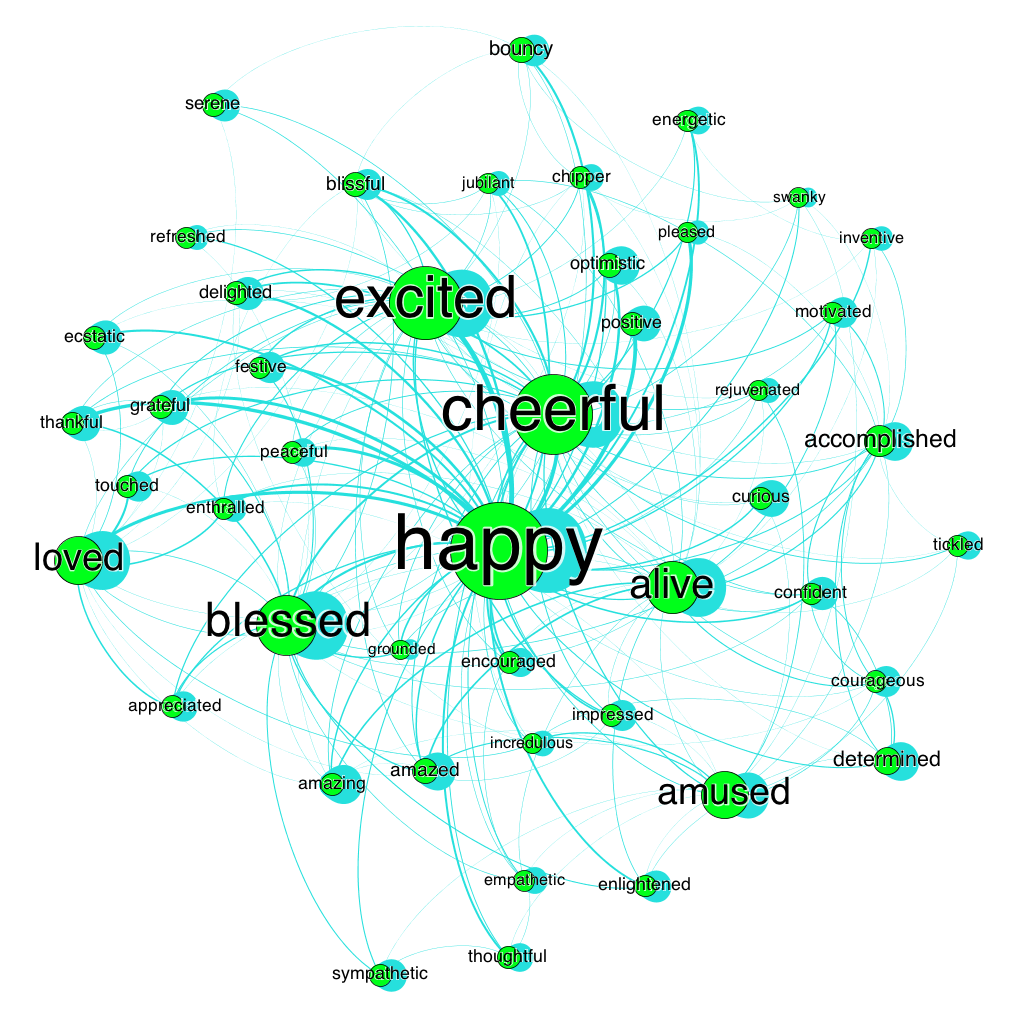
The “broaden and build theory” is an idea in psychology that positive emotions allow us to expand our awareness in new ways and tap into mental resources that aren’t always available to us.
Happiness is a strategy.
The “broaden and build theory” is an idea in psychology that positive emotions allow us to expand our awareness in new ways and tap into mental resources that aren’t usually available to us when we are experiencing more negative emotions.
According to psychologist Barbara Fredrickson in her book Positivity, negative emotions typically lead to narrow, immediate survival-oriented behaviors. For example, we’ve evolved to experience emotions like fear and anxiety when undergoing a threat, and usually the impulse is to fight-or-flight.
Negative emotions are designed to get us to take action right away, because there is something pressing at hand. It’s appropriate to experience negativity if you’re in a serious life-or-death situation.
However, when we aren’t in these life-or-death situations, negative emotions don’t serve too much value. Instead, they often suck up our mental resources on things that aren’t that serious or pressing.
Building on positive emotions provides a long-term plan of adaptation and self-growth, one that looks beyond mere survival, and beyond immediate threats and needs.
When we are in a positive mind frame, we are more likely to excel in all different areas of our lives: work, relationships, health, education, happiness, and overall life satisfaction.
A lot of people think they need to first achieve their values and goals, and then they can experience positive emotions. But we often need to work on being more positive in our attitude BEFORE we can start building the life we really want.
The Broaden and Build Theory: Start an Avalanche of Positivity
Positive emotions initiate other positive emotions
Emotions aren’t static, they are always changing – flowing from one feeling to another feeling as the day goes on. And often times our emotions blend into other emotions, such as “tired” → “sad” → “frustrated,” or “excited” → “happy” → “blessed.”
A team of researchers at Kanjoya started something called the “Experience Project” to measure people’s self-reported emotions in real-time, and then graph out how those emotions flow into other emotions.
Here is a graph of how emotions like happiness, excitement, and cheerful can lead to a wide-range of other positive emotions.

You can find more of their research here, including other “emotional clusters” that seem to be common in our everyday lives.
From moment to moment, we jump from one “emotional node” to another. But of course, some jumps are more common and easier to make than others.
Jumping between emotions in the same cluster (“joy” → “excitement,” or “joy” → “humor”) is more likely to happen than jumping between nodes in completely different clusters (“joy” → “fear,” or “joy” → “annoyed,” or “joy” → “sadness”).
Don’t get me wrong, these jumps sometimes happen, but they are usually the result of a rare or spontaneous change in circumstances. They aren’t a very natural or common flow of emotions.
So, by working to cultivate any single positive emotion, we can begin to broaden the range of our experiences to other positive emotions as well.
For example, if you need a quick mood change, try just watching a comedy movie or have a friend tell you a joke, then watch as your “humor” → “satisfaction” or your “humor” → “cheerful.” Your positivity will often branch out to other positive nodes.
Just that small nudge in a positive direction can feed off of itself. It gets you one step closer to being within that “happy cluster” of emotions.
The positivity ratio
As valuable as positive emotions are in our life, it’s important not to forget that negative emotions serve a purpose too.
According to Barbara Fredrickson, maximum flourishing happens when we maintain a “positivity ratio” that is roughly 3:1. This means that we should try to be spending approximately 75% of our time experiencing some type of positive emotion, and only 25% of our time experiencing some type of negative emotion.
The positivity ratio is just a guideline, but it does highlight the importance of having a healthy mix between both positive and negative emotions, with a moderate bias toward the positive end.
Enter your email to stay updated on new articles in self improvement:
